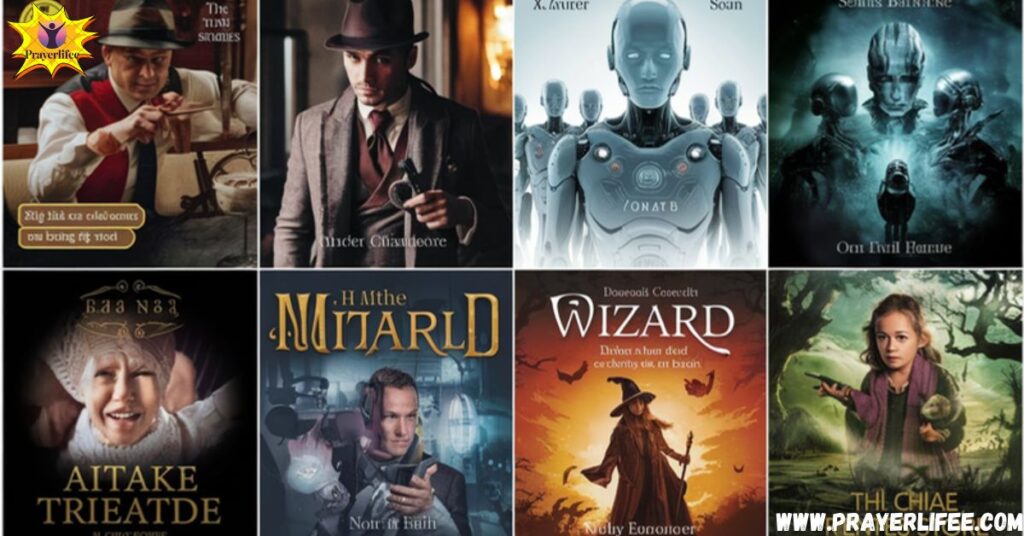Managing multiple stories at once can feel like juggling—trying to keep every ball in the air without dropping one. Whether you’re crafting a novel, posting on social media, or writing for a blog, writing multiple narratives can be tricky.
But with the right techniques, you can turn it into an art form that makes your work more engaging and dynamic. In this guide, we will break down everything you need to know about managing multiple storylines, narrative management, and story themes for adults.
Storytelling Topics for Adults
Writing for adults opens up a wide range of complex themes and deep emotions. Unlike children’s stories that often focus on simple lessons or adventures, adult storytelling topics dive into intricate relationships, psychological depth, and societal issues. Stories for adults may explore everything from the struggles of love and identity to the complexities of human behavior and historical events.
Adult storytelling involves a lot of emotional complexity. Whether you’re writing about love, loss, or personal growth, it’s crucial to choose a story theme that resonates with the reader’s experience. For example, psychological thrillers often delve into deception, paranoia, and deep, introspective conflict. Historical fiction offers readers the chance to explore real-world events through fictional characters, while romance stories tackle love, heartbreak, and personal transformation.
Popular Storytelling Themes for Adults

Adults are drawn to stories that explore complex emotions, narrative cohesion, and the intricacies of human nature. Here are some popular themes that work well for adult audiences:
- Psychological Thrillers: These stories dive into the human mind, exploring themes like deception, paranoia, and moral dilemmas. Think of stories where nothing is quite as it seems, and the twist at the end leaves readers questioning everything.
- Romance and Relationships: Love stories are timeless. They can be heartwarming, heartbreaking, or somewhere in between. Romance stories often explore the complexities of relationships, emotional growth, and personal healing.
- Historical Fiction: By blending real historical events with fictional characters and storylines, historical fiction provides a rich backdrop to explore themes like courage, conflict, and the effects of societal changes.
- Social Issues and Commentary: Social issues like racism, mental health, and poverty are important topics for adult stories. These narratives often provide deep insights into the human condition and encourage readers to reflect on societal structures.
- Fantasy and Sci-Fi: Fantasy and science fiction open the door to exploring alternate realities, futuristic societies, and mythical creatures. These genres allow for creative world-building and imaginative storytelling.
- Personal Growth and Redemption: Everyone loves a good redemption story, where a character struggles through adversity, learns from mistakes, and transforms into something better. These stories are often emotionally powerful and relatable.
How to Pick the Right Storytelling Topic?
Choosing the right storytelling topic can sometimes feel overwhelming. With so many possibilities, how do you decide on the theme that will resonate most with your audience? Here are a few questions to guide you:
- What emotions do I want to evoke in my readers? Writing with complex themes can evoke a variety of emotions, from joy and hope to fear and sadness. Consider the emotional journey you want your audience to experience.
- Is this theme relevant to today’s audience? A narrative management strategy is to pick a topic that is timely and resonates with current societal conversations.
- How can I bring a fresh perspective to this topic? For example, if you’re writing about romance, consider incorporating modern issues like social media’s impact on relationships or the pressures of maintaining love in a digital world.
- Will this topic fit well with the medium I’m using? Think about whether your story will work better in a blog post, a social media post, or a full-length novel.
How to Post Multiple Stories on Different Platforms
In today’s digital world, writers need to manage multiple stories across different platforms. Whether you’re using social media or blogging, each platform requires a unique approach to posting multiple stories.
Social Media Storytelling Techniques are an essential skill. Platforms like Instagram, Facebook, TikTok, and Snapchat all have different formats and ways to tell stories. To manage multiple narratives effectively, it’s important to adjust your style for each platform while maintaining your voice.
For example, on Instagram, you can upload multiple stories in sequence, using hashtags and interactive stickers to keep your audience engaged. Facebook allows for multiple posts throughout the day, helping keep your audience interested. For TikTok, a multi-part story series works well, and on Snapchat, you can post sequential snaps to create a storyline.
When it comes to blogging or using writing platforms like Wattpad or Medium, serial storytelling is an effective way to post multiple chapters over time. Each chapter should end with a hook, encouraging readers to return for the next installment.
Multiple Themes in a Story: How to Do It Right

A great story doesn’t have to be limited to just one theme. Many fiction writing strategies involve integrating multiple story arcs and themes. But it’s crucial to maintain balance and cohesion so that the story doesn’t feel overloaded. Here’s how to get it right:
When writing with multiple themes, prioritize one core theme that will serve as the backbone of the story. This helps you maintain narrative cohesion and keep the story focused. Secondary themes can be woven in through subplots, characters, or symbolism.
For example, in The Great Gatsby, the primary theme revolves around the American Dream, while secondary themes like love, betrayal, and class struggles are explored through the actions and relationships of the characters.
What to Do When You Have Too Many Story Ideas?
Managing story ideas efficiently is a skill every writer needs to master. If you find yourself with more ideas than you can handle, there are ways to keep them organized and make decisions about which ones to pursue.
- Create a Story Idea Bank: Whether digital or physical, a story bank is a place where you can store every idea that comes to mind. This allows you to capture ideas when they strike and revisit them later when you’re ready to develop them.
- Categorize Your Ideas: Group your ideas into categories based on their type—short stories, long-term projects, essays, or novels. This helps you see which ones are best suited to your current writing goals.
- Combine Similar Ideas: Sometimes, two or more ideas can be merged into a stronger, more coherent concept. This technique works well when you’re dealing with multiple plotlines or story arcs.
- Use a Storyboard or Mind Map: Visualizing your ideas can help you see how they connect and whether they fit together logically. Story writing tools for multiple projects, like storyboards or mind maps, can help organize your thoughts and keep your narratives aligned.
Urdu Stories Topics: Rich Themes in Urdu Literature
Urdu literature has a long tradition of exploring complex themes. Whether it’s the mysticism of Sufi poetry, the social issues of the working class, or tragic love stories, Urdu writers have long captivated audiences with their deep, thought-provoking narratives.
Popular themes in Urdu stories include the exploration of class struggles, women’s rights, and the complexities of love and loss. Writers like Mirza Ghalib masterfully blended themes of love and sorrow, creating a rich cultural tapestry that resonates with readers to this day.
Read More: El Gallo Meaning Explained – More Than Just a Rooster for 2025
Writing Essays with Multiple Topics: Structure Matters
Writing an essay with multiple topics can be tricky, but it’s a great way to dive into various aspects of a larger theme. The key to success is structure. Start with a clear introduction that introduces your central theme, then organize each paragraph by topic. Use smooth transitions to guide readers from one section to the next, ensuring that your essay remains cohesive and well-paced.
Short Story Prompts by Genre
Looking for ideas for your next short story? Whether you’re in the mood to write a thriller, romance, sci-fi, or fantasy, here are a few prompts to spark your creativity:
- A journalist uncovers a shocking secret about a famous politician (Thriller).
- Two strangers on a train realize they are childhood sweethearts (Romance).
- A scientist creates a machine that can read minds, but the results are terrifying (Sci-Fi).
- A young girl discovers she is the last survivor of an ancient magical bloodline (Fantasy).
Writing Multi-Plot Stories: Techniques That Work
Writing multiple plotlines can be difficult, but it can also make your story more dynamic and engaging. One effective technique for managing multiple story arcs is multi-perspective storytelling. By showing events from different characters’ viewpoints, you can build a more comprehensive picture of the world you’re creating.
Another technique is interwoven timelines. This allows you to tell different parts of the story in parallel, creating suspense and drawing the reader deeper into the narrative.
Story Topics for Grade 3 Kids: Fun Story Ideas
When writing for kids, especially younger ones, it’s important to keep things simple, engaging, and educational. Stories for third graders can be adventurous and full of imagination. Here are a few ideas:
- A young explorer finds a hidden treasure in the backyard.
- A new student teaches the class about kindness.
- A talking dog helps a little girl solve a mystery.
Tips for Writing for Kids
When writing for kids, use simple language and clear storytelling techniques. Children need relatable characters and fun, colorful stories that make learning enjoyable. Don’t forget to include a moral lesson that is easy to understand without being preachy.
Do I Have Multiple Storylines in My Book?

Having multiple storylines in a book can be an exciting and challenging writing choice. If your story features various characters with different conflicts or goals, multiple plot lines might be in play. These storylines can either run parallel to each other, eventually converging, or intersect in ways that create dramatic tension and complexity. You might have characters involved in separate events or challenges, but the outcome of one plot influences the others.
If your book explores different themes, perspectives, or timelines that intersect or intertwine, then you likely have multiple storylines. For example, you might have a primary plot that follows one character, but secondary plots focusing on other characters, subplots, or events that affect the main narrative.
However, just having multiple characters or scenes doesn’t automatically mean you have multiple storylines. The key is that the different threads in your story contribute to the overall narrative and character development, creating depth and complexity.
How to Manage Multiple Plot Lines
Managing multiple plot lines is one of the more intricate aspects of storytelling. When done well, it can create a dynamic and compelling narrative. But if mishandled, it can leave readers confused and disconnected. Here are three tips to help you effectively manage multiple plot lines:
Introduce Breaks When the Character Point of View Changes
A common method for managing multiple plot lines is shifting between different character points of view (POVs). This allows readers to follow different storylines from various perspectives. However, when you switch from one character’s POV to another, it’s important to handle the transition smoothly to avoid confusing your readers. Use breaks—either scene changes or chapter breaks—to signal when the POV changes.
This ensures that your audience understands the shift in focus and gives them time to adjust to the new storyline. You could also use chapter headings or timestamps to indicate where the story is transitioning, helping your readers follow the evolving narrative without losing track of the different plot lines.
Make the Plots Relevant to Each Other
To ensure that the multiple plot lines don’t feel disconnected or forced, they should have some overarching connection. Whether it’s a central theme, a single event that affects all the characters, or an emotional journey that all characters share, having a unifying factor will help keep the plots from feeling disjointed.
This can be a shared goal, a conflict that affects multiple characters, or even a single antagonist whose actions influence everyone’s storylines. By making the plots relevant to each other, you create a sense of narrative unity, ensuring that your readers can follow each thread without feeling like they are experiencing unrelated stories.
Your Topics | Multiple Stories: Final Tips
Managing multiple stories can be overwhelming, but with the right narrative management strategies, you can turn these challenges into creative opportunities. Writing multiple stories at once is an exciting way to engage your audience across different platforms and genres. The key is staying organized, using tools like storyboards and mind maps, and focusing on narrative cohesion.
Experiment, keep refining your storytelling, and most importantly, have fun with it!

